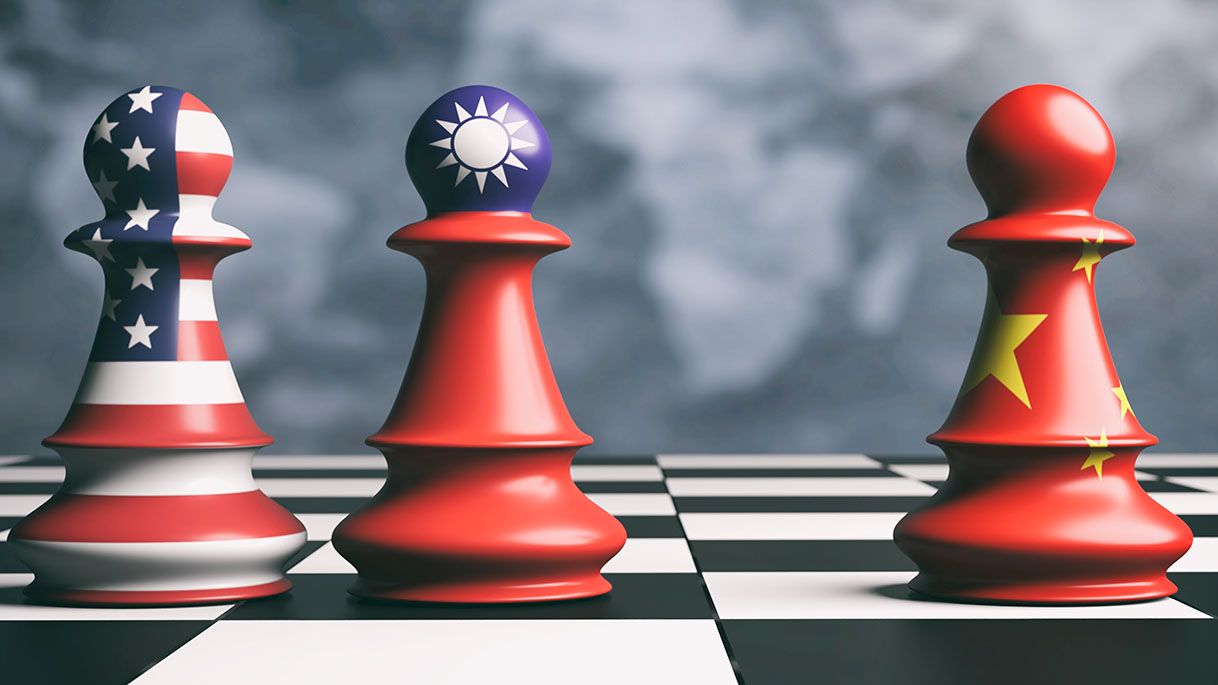Executive Brief

Military Affairs
Invasion Threat PlanningOn 20 April in an interview with a British media outlet, Leading Britain’s Conversation, Taiwan’s Foreign Minister Joseph Wu said, “We are taking the Chinese military threat very seriously...I think 2027 is the year that we need to be serious about.” Wu continued, “We made a mistake in not stopping Russia from attacking Ukraine, and I hope like-minded partners, the UK included, can stop China from initiating any war against Taiwan.”
On 26 February CIA Director William Burns said in a CBS interview, “We do know, as has been made public, that President Xi has instructed the PLA, the Chinese military leadership, to be ready by 2027 to invade Taiwan, but that doesn’t mean that he’s decided to invade in 2027 or any other year as well.” Burns stressed, however, the US must take “very seriously” Xi’s desire to ultimately control Taiwan, even if military conflict is not inevitable.
On 18 April ADM John Aquilino, Commander of US Indo-Pacific Command, told the House Armed Services Committee that “everybody is guessing” when it comes to predicting timelines for a Chinese invasion of Taiwan. He said, “I think there’s a ton of variables on what might motivate President Xi Jinping to take that action. And it’s our job to convince him every day that it would be a bad choice.
On 26 April Taiwan’s Defense Ministry announced the plan for its large Han Kuang exercise to confront the PLA’s latest threat. The exercise will be conducted in two phases — Phase 1 will be tabletop war games to held 15-19 May; and Phase 2, live-fire exercises on 24-28 July.
- Phase 1 will employ the US-built Joint Theater Level Simulation platform and simulate “joint, combined, and civil-military response” to a mainland invasion. Phase 2 will focus on preservation of forces in the event of a full- scale invasion and maritime interceptions to break a PLA blockade of Taiwan.
- Han Kuang exercises have been held annually since 1984. In May 2021 the US disclosed that the US military had sent specialists to assist in the exercise. During last year’s Han Kuang exercise, China flew a drone over the Taiwan- controlled Kinmen Islands near the mainland while it continued daily air intrusions of Taiwan’s air defense identification zone. Given the heightened tensions across the Taiwan Strait, the PLA will likely increase operational intensity around Taiwan during this year’s Han Kuang exercises.
On 21 April China’s Foreign Minister QIN Gang defended China’s position on Taiwan and reiterated China’s resolve to take back Taiwan. Speaking in Shanghai, Qin said,
“Both sides of the Strait belong to one and the same China. This is Taiwan’s history, and it is also the status quo of Taiwan. Taiwan’s return to China is a component of the post-war international order, written in black and white in the Cairo Declaration and the Potsdam Proclamation.”
Qin questioned the US call to maintain rules-based international order, the status quo and stability across the Taiwan Strait and threatened, “China will not lose any part of its territory that has been returned...there is no vagueness at all in our response to anyone who attempts to distort the One China principle.”
After Taiwan’s KMT government fled to Taiwan from the mainland in 1949, the US had thousands of soldiers deployed in Taiwan.
At the height of US military presence (1958), there were nearly 20,000 US military personnel in Taiwan. As part of the agreement to establish diplomatic relations with Beijing in January 1979, the US withdrew all its military personnel. On 25 April 1979, the US Taiwan Defense Command was disbanded, and the last group of US soldiers left on 3 May 1979. On 1 January 1980, the Mutual Defense Treaty between the US and Republic of China was terminated.
Military Sales and ActivityOn 18 April Taiwan media reported that the US ordered 400 land-based Harpoon antiship missiles for Taiwan for $1.17 billion. The missiles are expected to be made before March 2029. The report said Taiwan will be the first recipient to have a whole spectrum of Harpoon antiship systems — airborne, submarine, ship- and land-based.
Taiwan media also reported more than 200 US military personnel are deployed in Taiwan to support Taiwan’s military training and war preparedness. Eighty percent of the US instructors are from the US Army.
On 18 April Taiwan’s Defense Ministry indirectly acknowledged the media report.
On 16 April the guided missile destroyer USS Milius passed through the Taiwan Strait days after China’s military exercise around Taiwan that was in response to President Tsai Ing-wen’s meeting with Speaker McCarthy.
Download our recent executive brief to keep reading.